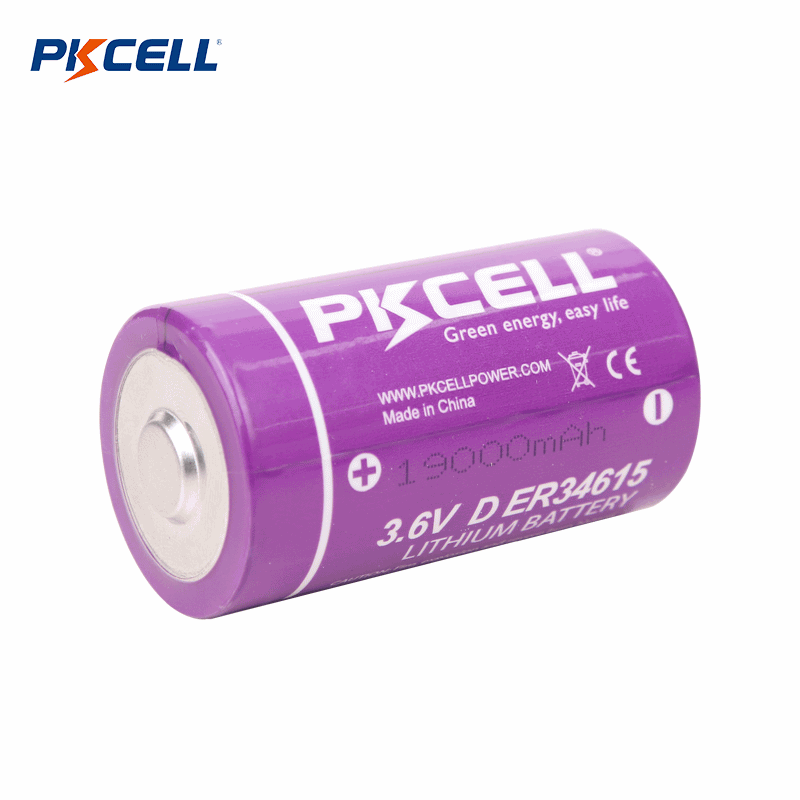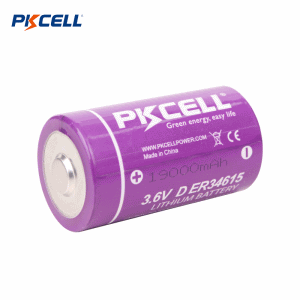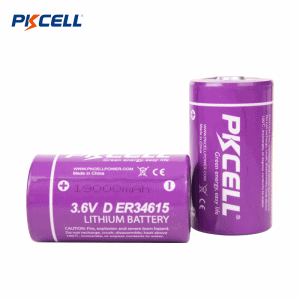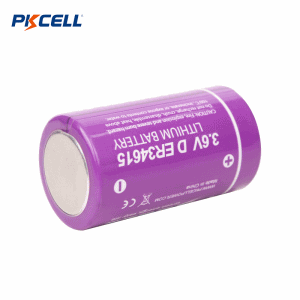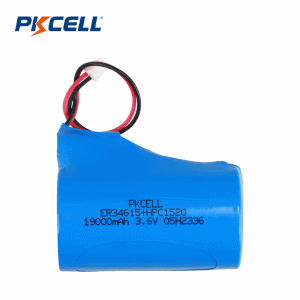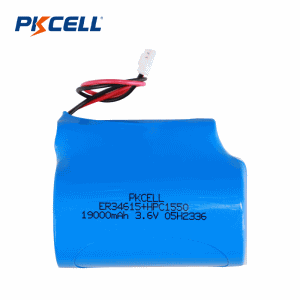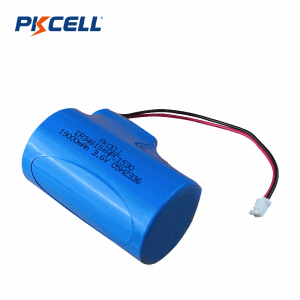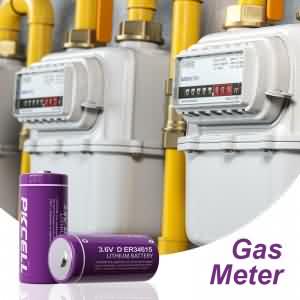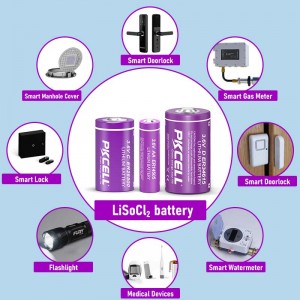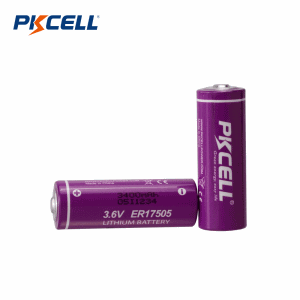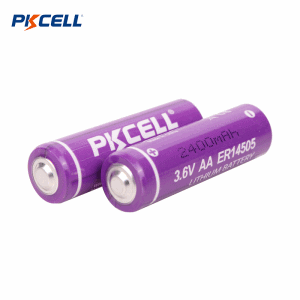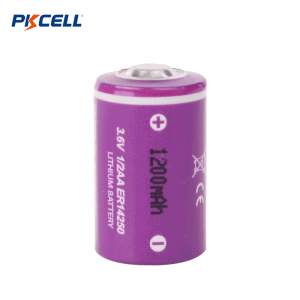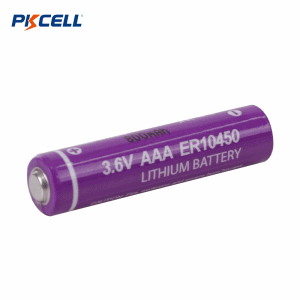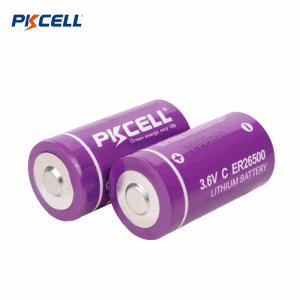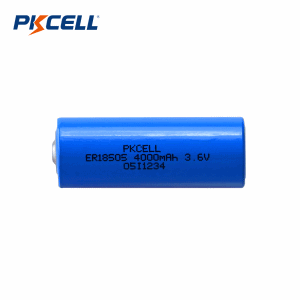3.6V D ER34615 Li-SoCl2 Battery (19000mAh) | Pkcell
Understanding ER34615 Battery
The ER34615 D 3.6 V battery is a primary battery that can not be recharged. It is part of the Lithium Thionyl Chloride (Li-SOCl₂) group. This D-size battery has a voltage of 3.6V. This makes it a great choice for many uses because it lasts a long time and provides plenty of power. The ER34615 lithium batteries are popular in places where changing the battery often is difficult. This battery is made for uses that need stable and dependable power for a long time. It works well because it doesn't lose charge quickly and has a lot of energy. This makes it perfect for remote sensors, metering systems, GPS trackers, and several other industrial uses.
Key Features of Pkcell ER34615
- High and Stable Voltage
- High Minimum Voltage During Pulsing
- Stainless Steel Container
- Hermetic Glass-to-metal Sealing
- Low Self-discharge Rate (Less than 1% After 1 year of Storage at +25℃)
- Wide Operating Temperature (-60℃~+85℃)
- Restricted for transport(class 9)
Main Applications of Pkcell ER34615
- Gas Metering
- Utility Metering
- Alarms and Security Devices
- Memory Back-up
- Tracking Systems
- Professional Electronics
Case study 1 - PKCELL ER34615 Batteries Enable Long-Life Wireless Detectors – France
A French wireless detector manufacturer required a high-capacity, ultra-low self-discharge lithium battery to power their new generation of wireless detectors. PKCell provided bulk high-performance 3.6V 19000mah ER34615 batteries, meeting the client's specifications. At last the client establish a long-term cooperation with PKCell.
Learn more details about the case study here: PKCELL ER34615 Batteries for Wireless Detectors
Case study 2 - PKCELL ER34615 Batteries Power Government Underwater Scanning Projects – Mining Industry
A company need high-capacity, long life batteries for its underwater sacanning operations for the mining industry. PKCell offer reliable 3.6V ER34615 battery, guaranteeing a 25-30 day lead time. PKCell's battery ensured uninterrupted performance in extreme marine environment.
Learn more details about the case study here: PKCELL ER34615 Batteries for Underwater Scanning
Cost-effective Alternatives to Tadiran, Saft, Xeno & Tekcell
| PKCELL ER Model | Equivalent Competitor Model(s) |
|---|---|
| ER26500 | LS26500 (Saft) |
| ER14505 | LS14500 (Saft), XL-145F (Xeno), Tekcell SB-AA02, TL-5186 (varies) |
| ER14250 | TL-5902 (Tadiran), Tekcell 1/2AA, TL-2150, XL-060F, XL-055F, SL-760, TL-5104, LS14250 |
| ER17505 | LS17500 (Saft) |
| ER34615 | LS33600 (Saft), TL-5930 (Tadiran), TL-5920, XL-205F, LSH20 (Saft) |
| ER18505 | LS-18505, TL-5955 (Tadiran) |
| ER17335 | LS-17335, TL-5903 (Tadiran), TL-5903S |
Specification Of Other Li-SOCl2(Energy Type) Models
| Model IEC | Nominal Voltage | Dimensions | Nominal Capacity | Standard Current | Max Continuous Discharge Current | Max Pulse Discharge Current | Cut-off Voltage | Weight Approx | Operating Temperature | |
|---|---|---|---|---|---|---|---|---|---|---|
| ER10450 | AAA | 3.6 | 10.0×45.0 | 800 | 1.00 | 50 | 60 | 2.00 | 9 | -55~+85 |
| ER14250 | 1/2AA | 3.6 | 14.5×25.0 | 1200 | 0.50 | 20 | 45 | 2.00 | 10 | -55~+85 |
| ER14335 | 2/3AA | 3.6 | 14.5×33.5 | 1650 | 0.70 | 75 | 150 | 2.00 | 13 | -55~+85 |
| ER14505 | AA | 3.6 | 14.5×50.5 | 2400 | 1.00 | 100 | 200 | 2.00 | 19 | -55~+85 |
| ER17335 | 3.6 | 17×33.5 | 2100 | 1.00 | 100 | 200 | 2.00 | 30 | -55~+85 | |
| ER17505 | 3.6 | 17×50.5 | 3400 | 1.00 | 100 | 200 | 2.00 | 32 | -55~+85 | |
| ER18505 | A | 3.6 | 18.5×50.5 | 4000 | 1.00 | 120 | 200 | 2.00 | 32 | -55~+85 |
| ER26500 | C | 3.6 | 26.2×50.5 | 8500 | 2.00 | 130 | 300 | 2.00 | 55 | -55~+85 |
| ER34615 | D | 3.6 | 34.2×61.5 | 19000 | 3.00 | 200 | 400 | 2.00 | 107 | -55~+85 |
| ER9V | 3.6 | 48.8×17.8×7.5 | 8500 | 2.00 | 130 | 300 | 2.00 | 16 | -55~+85 | |
More Than Just Individual Cells - We Offer Complete Power Solutions.
- Single Battery With Cables and Connectors
- Custom LiSOCl2 Battery Packs Based on Your Tailored Needs

Why Choose Pkcell Battery?
Typical Discharge Characteristics
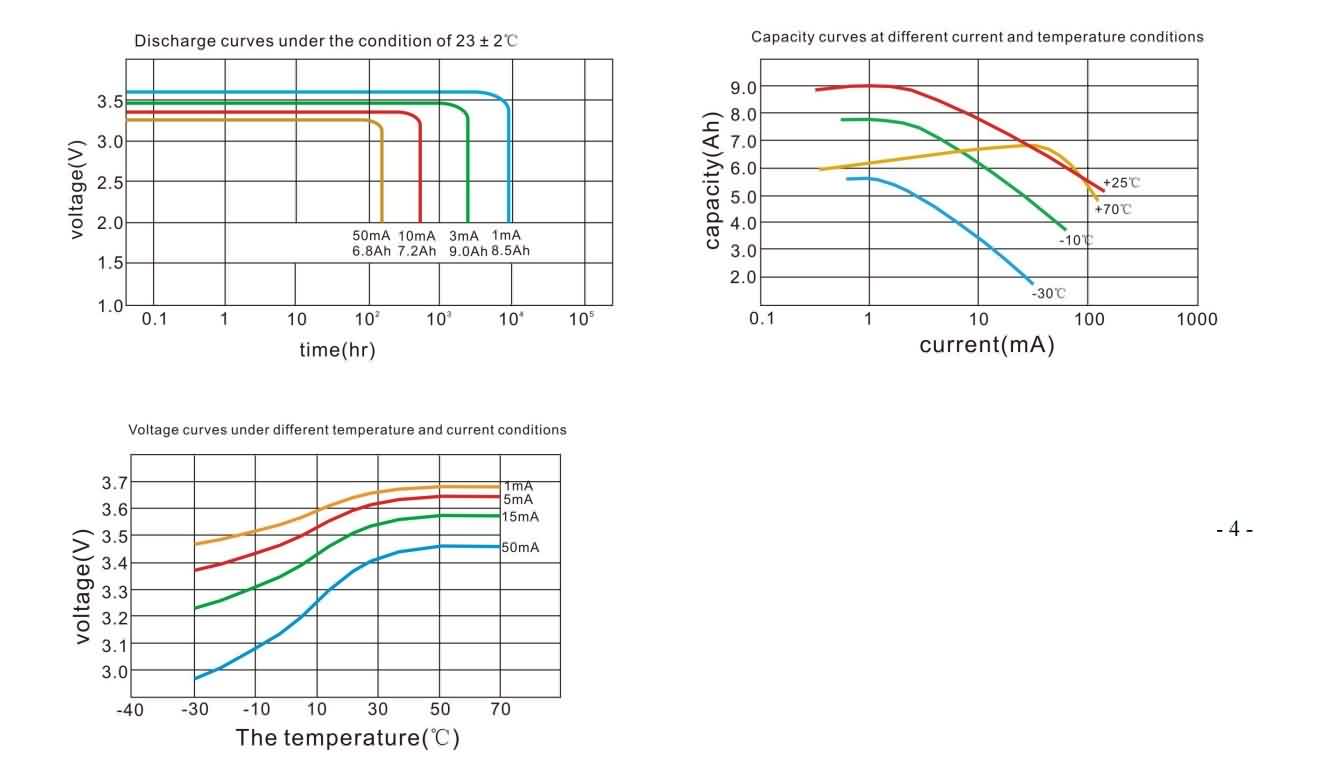
Warning:
- These are non rechargeable batteries.
- Do not recharge, short circuit,crush, disassemble, heat above 100℃ incinerate.
- Do not use the battery beyond the permitted temperature range.
Frequently Asked About LiSoCl2 Battery
- Lead Time: Standard samples typically arrive in 7-12 days. Formal orders usually take around 25 days, though smaller quantities might ship faster, potentially within 15-18 days.
- Payment Methods: We accept various payment types, including T/T (Telegraphic Transfer), L/C (Letter of Credit), and PayPal.
- Shipping: We offer flexibility! Depending on your needs and location, we can ship your order via air freight (using carriers like FEDEX, DHL, UPS, EMS, etc.) or via sea freight.
- Delivery Terms: We can work with several common international shipping terms, including EXW, FCA, FOB, CFR, and DDU.
We have a minimum order value of USD $500. The actual quantity you receive depends on the unit price of the specific batteries you choose. Absolutely! We understand you need to test our products. We're happy to provide samples for your evaluation before you place a formal order.
Passivation is an interesting natural phenomenon observed in Lithium Thionyl Chloride (LiSO₂Cl₂) batteries! When lithium metal touches the thionyl chloride (SOCl₂) electrolyte, a thin, protective layer forms on the surface of the lithium negative electrode. This layer, mostly made up of Lithium Chloride (LiCl), creates a high-resistance barrier that prevents a continuous reaction between the lithium and the electrolyte. Isn't it fascinating how this process helps maintain the battery's performance?
Yes. ER34615 batteries are available in standard, with axial leads, tabs, or connectorized versions to suit different device requirements, especially for OEM and industrial applications.
The ER34615 battery is widely used in remote monitoring systems, smart metering (e.g., water, gas meters), GPS tracking, industrial IoT sensors, and military-grade electronics that require long-lasting, high-energy primary lithium batteries.
ER34615 batteries use Lithium Thionyl Chloride (Li-SOCl₂) chemistry, known for its high energy density, very low self-discharge rate (<1% per year), and wide operating temperature range from -55°C to +85°C.
Depending on the application and current draw, ER34615 batteries can last 5 to 15 years or more, thanks to their ultra-low self-discharge and stable voltage output.
No. ER34615 is a primary (non-rechargeable) battery. Attempting to recharge it may result in leakage, overheating, or explosion. Always dispose of them according to local regulations.
While both share the D-cell form factor, ER34615 offers much higher energy density, longer shelf life, and better performance in extreme environments, whereas D-size alkaline batteries are cheaper and rechargeable options exist.


